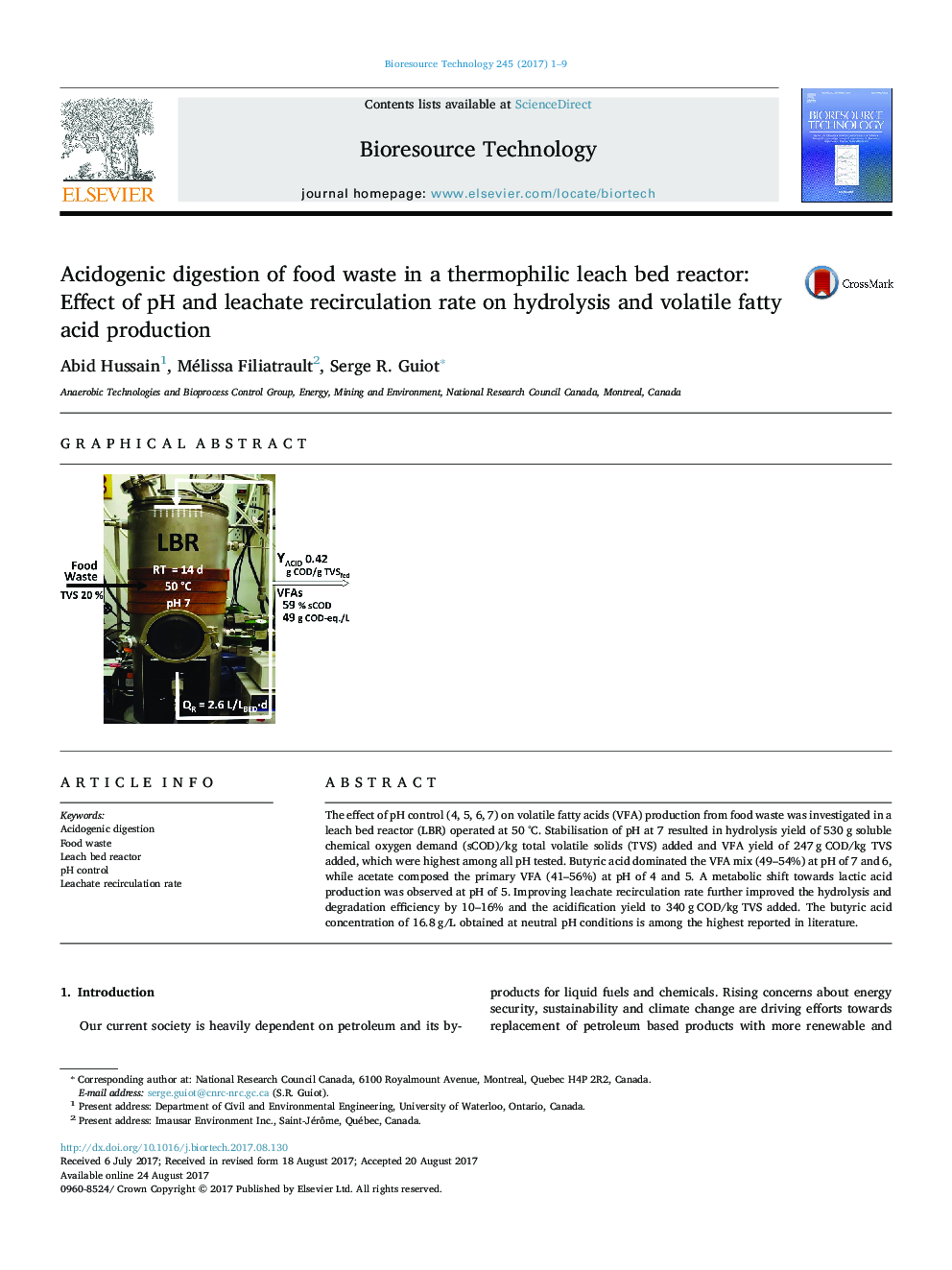| Article ID | Journal | Published Year | Pages | File Type |
|---|---|---|---|---|
| 4996760 | Bioresource Technology | 2017 | 9 Pages |
â¢Food waste acidogenesis was performed in a leach bed reactor at pH 4, 5, 6 and 7.â¢Higher pH enhanced degradation, up to 72% with leachate recirculation risen by 50%.â¢This resulted in the highest VFA yield (330 g COD/kg TVS added and 58% of sCOD).â¢Butyrate dominated at pH 6 and 7, to 17 g/L with higher leachate recirculation.â¢A metabolic shift towards lactate production was observed at pH 5.
The effect of pH control (4, 5, 6, 7) on volatile fatty acids (VFA) production from food waste was investigated in a leach bed reactor (LBR) operated at 50 °C. Stabilisation of pH at 7 resulted in hydrolysis yield of 530 g soluble chemical oxygen demand (sCOD)/kg total volatile solids (TVS) added and VFA yield of 247 g COD/kg TVS added, which were highest among all pH tested. Butyric acid dominated the VFA mix (49-54%) at pH of 7 and 6, while acetate composed the primary VFA (41-56%) at pH of 4 and 5. A metabolic shift towards lactic acid production was observed at pH of 5. Improving leachate recirculation rate further improved the hydrolysis and degradation efficiency by 10-16% and the acidification yield to 340 g COD/kg TVS added. The butyric acid concentration of 16.8 g/L obtained at neutral pH conditions is among the highest reported in literature.
Graphical abstractDownload high-res image (88KB)Download full-size image
